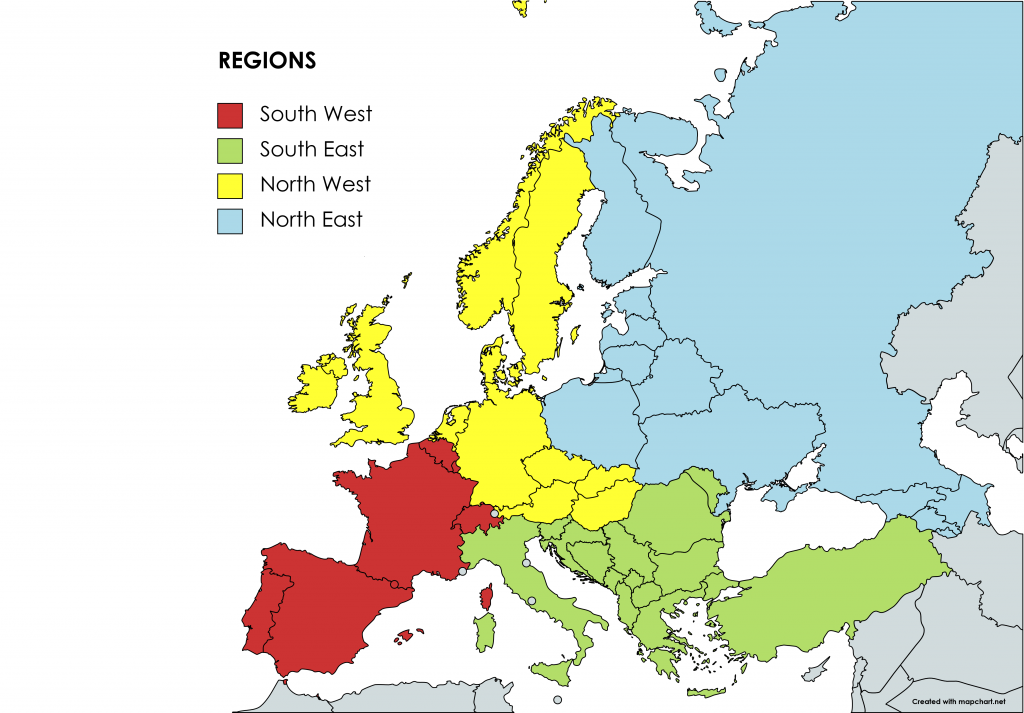Release of a model to collect data on wild boar distribution and abundance across Europe: the need for data standards
The Consortium ENETWILD (established through a framework contract funded by EFSA) is focusing on the collection of wild boar abundance and occurrence data for the analysis of the risk factors of African Swine Fever (ASF) spread, and for the assessment of effectiveness of wild boar management measures in the affected areas. ENETWILD now announces the release of a normalized wild boar data model (WBDM) to populate a common database, which later will be validated and shared.
The WBDM is composed of a list of fields to be recorded, including data and metadata (which describe data and information carried by the data). The WBDM is intended to be filled by data providers, as we identified you potentially are, representing all European regions and countries. We also encourage you to distribute further to anyone else able to provide such kind of data.
ENETWILD defined the data requested in this model and their technical specifications to offer a common frame to insert them; i.e. what we call the STANDARDS. These standards are essential in order to harmonize the way similar data coming from different sources is recorded and will assure wild boar data are correctly collected, shared; and finally used. This is why the model may appear complex at a first glace, but the effort and dedication we require will be very worthwhile, in order to make data comparable.
The data requested refer to wild boar (i) hunting statistics, (ii) density and (iii) occurrence, including absence data. Therefore, different data model should be used for each type of data (see links below).
- WBDM_hunting
- WBDM_density
- WBDM_occurrence
As the same data can be used for more than one purpose (e.g. hunting statistics can be used to estimate occurrence data), for each type of data (if you manage more than one) we recommend filling only one data model, which must be the most informative one (in the former example that should be the WBDM_hunting). Hunting statistics and density data models, if correctly filled, can always be converted a posteriori into occurrence (presence/absence) data.
Absence data are also of particular importance in this project and should be reported, but must be associated with a sampling effort (e.g. abundance monitoring, hunting grounds without wild boar presence and catches). Absences will be recorded in WBDM_occurrence excel file.
The WBDM is accompanied by a Data Sharing Agreement (see links below), which must be signed by the data owner, in person or by a legal representative. We also attach a document detailing the general instructions to fill and submit the data.
Please before filling any data model, read the General instructions (see link below) carefully.
FAQs will be available on the project website and assistance will be assured by ENETWILD reference partners and ENETWILD Helpdesk and the list the list of focal contacts (identify your region) provided in Annex 1 of the General Instructions document).
The time span of interest to the project is from 2013 (hunting season 2013-2014) onwards, and data collection will be a continuous activity for the next years (we ask you also to continuously provide not only already existing data, but data generated/collated in the future).
“This project continues to update and incorporate information from new collaborators”
Download the files to fill in the Wild Boar Data Model
In order to be correctly filled, the spreadhseet files of data models should be downloaded (click >open online > download to your PC) don’t fill them online!
General Instructions
Data Sharing Agreement
FAQs
ALL FILES excel2016 (zip)

ALL FILES excel2007 (zip)
One of the two available versions should work from xls2007 to xlsx of office365. If the drop-down menus do not work properly, select the other excel available option. After the new window is opened, download the compressed files using the top left download button
Video Tutorials for Wild Data Model


WBDM_Russian

WBDM_Spanish

WBDM_Italian
1. South West region:
French National Hunting and Wildlife Agency (ONCFS)
National Institute on Wildlife Research (IREC)
Contact: project.enetwild@uclm.es
List of Countries: France, Spain, Belgium, Switzerland, Portugal, and Luxemburg.
2. South East region A:
University of Torino (UNITO),
Contact: enetwild@unito.it
List of Countries: Italy, Greece, Romania, Albania, Moldova, Cyprus, Turkey
South East region B:
University of Sassari (UNISS).
Contact: enetwild@uniss.it
List of Countries: Italy, Slovenia, Serbia, Croatia, Bosnia & Herzegovina, Montenegro, Kosovo, Macedonia and Bulgaria.
3. North West region:
Institute for Terrestrial and Aquatic Wildlife Research (ITAW),
Contact: enetwild@tiho-hannover.de
List of Countries: Germany, UK, Ireland, Netherlands, Austria, Czech Republic, Slovakia, Hungary, Denmark, Norway, and Sweden.
4. North East region:
Mammal Research Institute Bialowieza (MRI).
Contact: enetwild@ibs.bialowieza.pl
List of Countries: Poland, Finland, Russia, Belarus, Latvia, Lithuania, Estonia, Ukraine, Georgia, Armenia, and Azerbaijan.




